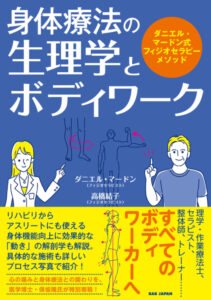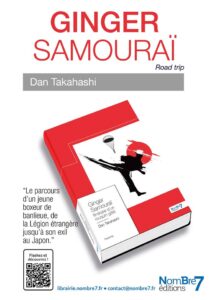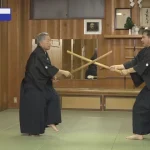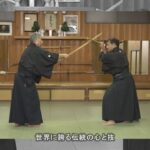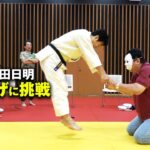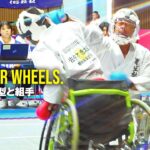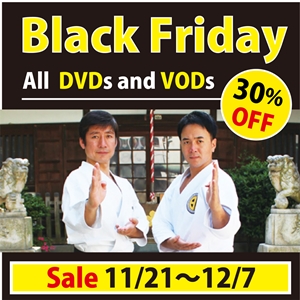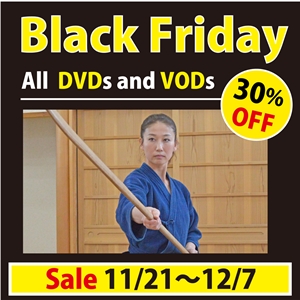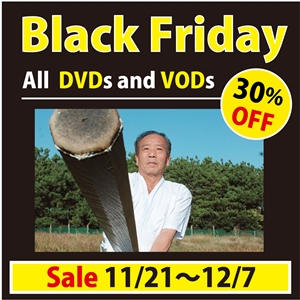【Exploring the spirit of the Ryukyu】Series 2 (HIDEN 06/2023)「Kinjyo Masakazu SENSEI」
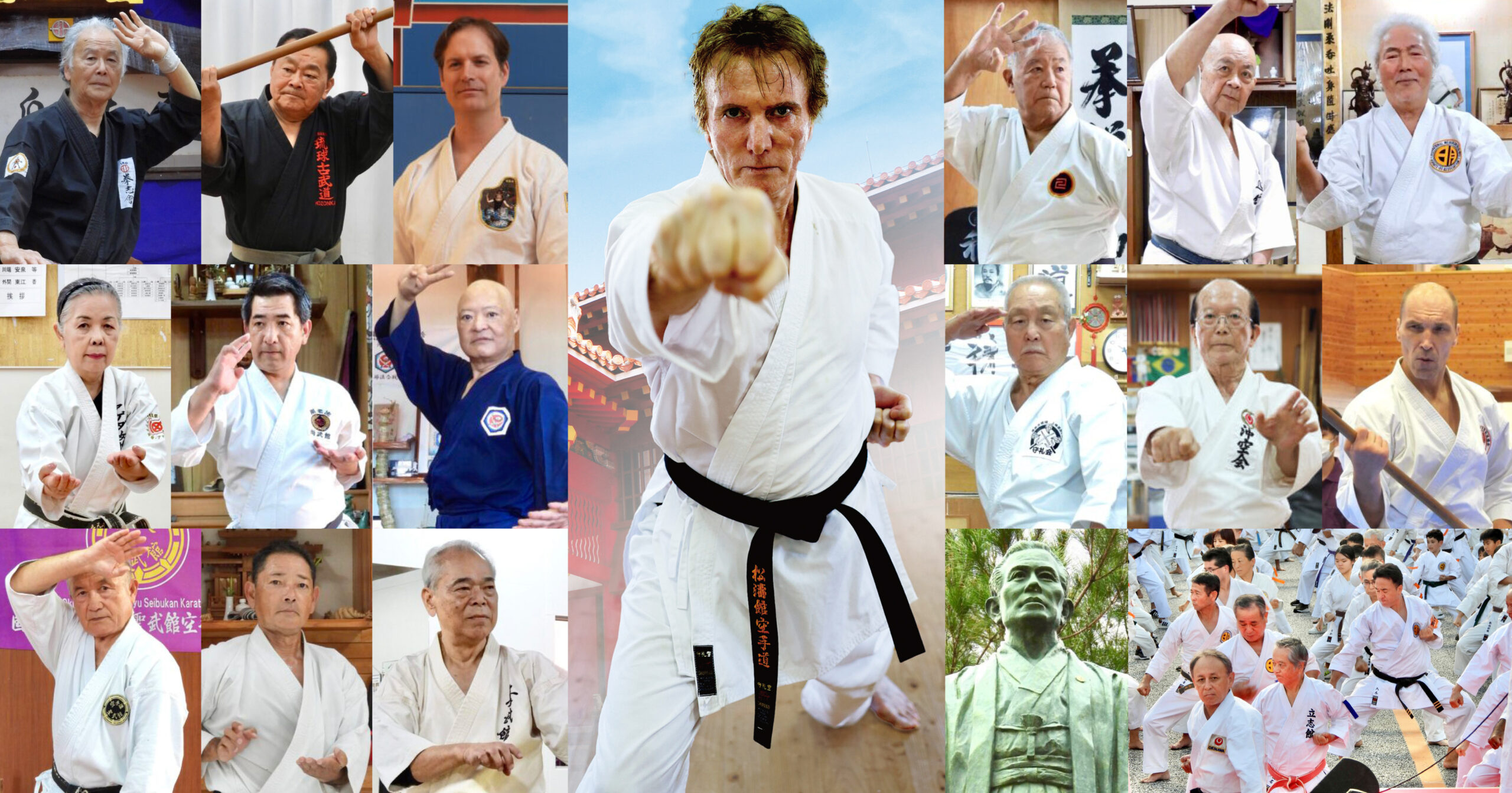
VISIT OF TRADITIONAL OKINAWA DOJO
Daniel Mardon, “The karatéka-therapist”, is visiting for us some Okinawa traditional Dojo.
Physiotherapist and long time martial-arts practitioner, Daniel Sensei lives in Okinawa. One of his passions is to find unique Dojo with a strong personality that will leave an imprint forever.
This special series of articles proposes to explore the original spirit of Karate.
For this special Kobudo issue, we are visiting the headquarters of the “Ryukyu Kobudo Hozonkai & Okinawa Uechi-Ryu Hozonkai”. Hozon means “preservation” and Kai, “group”. The respect of traditions is therefore a big concern here.
“Ryukyu Kobudo”and”Okinawa Uechi-ryu”
Rendez-vous with a warrior who masters the 2 styles!
KINJO MASAKAZU HANSHI 9 Dan KOBUDO & UECHI-RYU.
Today, we are meeting Kinjo Sensei; a living legend in Ryukyu Kobudo. I am a little bit nervous to meet such a Hanshi, since I am mostly a Shotokan Karateka. In my generation, only Japan Mainland Karate was available in Europe and Karate was only Karate. I had heard of the feudal Japanese Kobudo, but it was more about the Samurai’s weapons like Katana, archery and combat on horses. My first exposure to Okinawa Kobudo was through Bruce Lee movies. Nunchaku practice became a must that Karateka should know in the 70’s and actually I was quite good at it. I still have my home-made nunchaku from a very strong and precious wood. However, I have never practiced Bo and I heard that the training emphasizes on it.
This part of Shuri is called Kubagawa and that is the name of the Dojo.
As we arrive, the Sensei’s assistants are already in place. All of them are high ranked. Taira Minako Renshi 6 Dan, a multi-champion, greets us with her charming smile and personality. A few minutes later, Kinjo Sensei appears in his black Do-Gi. This moment is a great characteristic of most Dojo. In a split second, you can feel that the energy changes and that the presence of the Master is inundating the room. Everyone bows and the Master comes to us with a warm smile. Since we are early, we will conduct the interview before the training. The assistants rush to bring chairs and 2 of them kneel in “Seiza” on both sides of the Master.
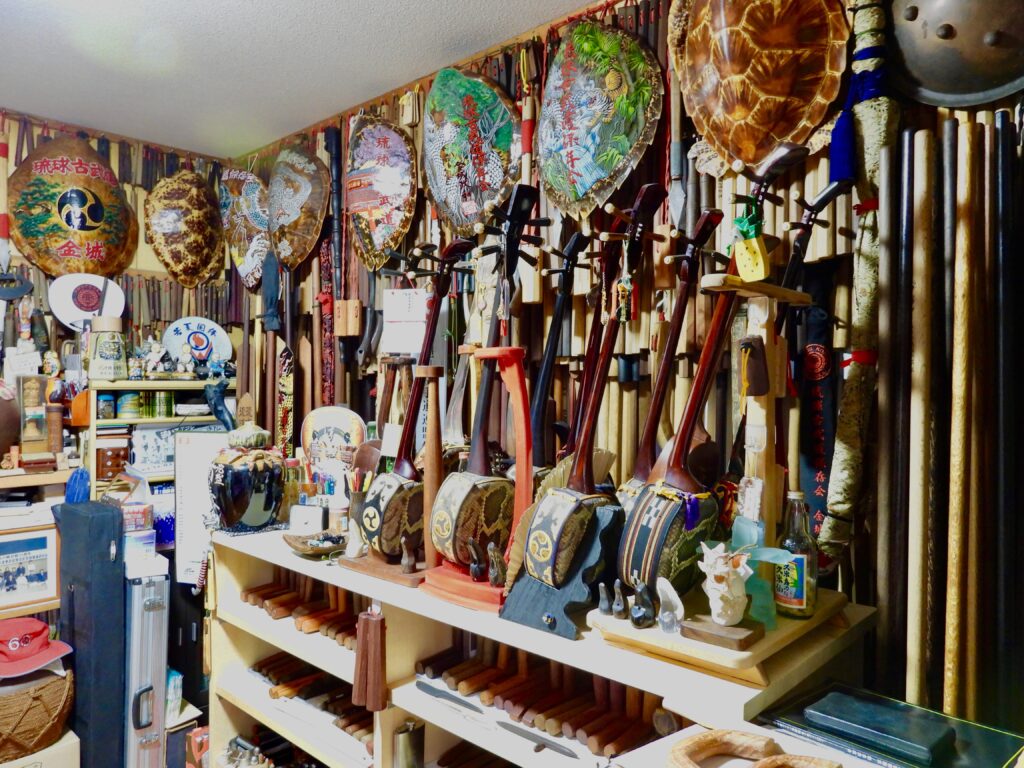
Some of the 1,500 Ryukyu Kobudo weapons that Kinjo Sensei has collected over the years. 800 Nunchaku and over 120 sticks are carefully stored.
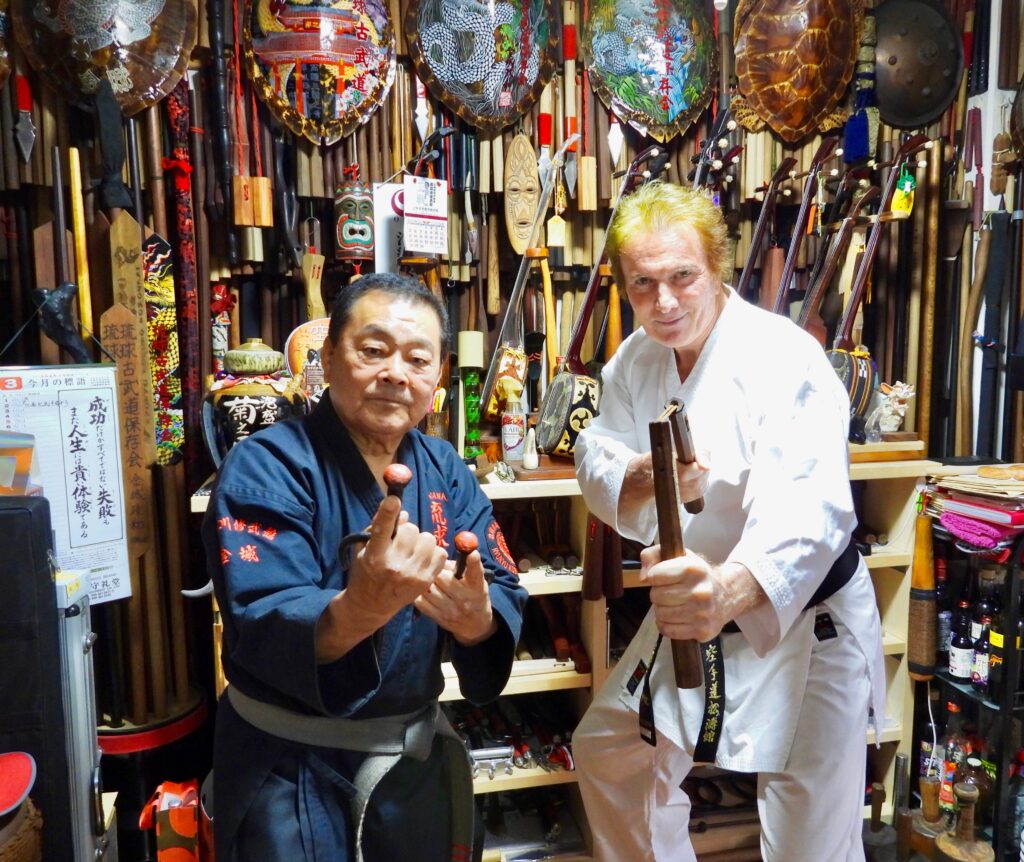
The inheritance from 3 generations of Masters. These Sai and Nunchaku belonged to Taira Shinken and later to Minowa Sensei.
Daniel’s Nunchaku was a favorite of Taira Shinken.

This Nunchaku was owned by Taira Shinken in the 1950s and by Minowa Katsuhiko in the 1970s. You can feel the imprint and history in the shades of colors.
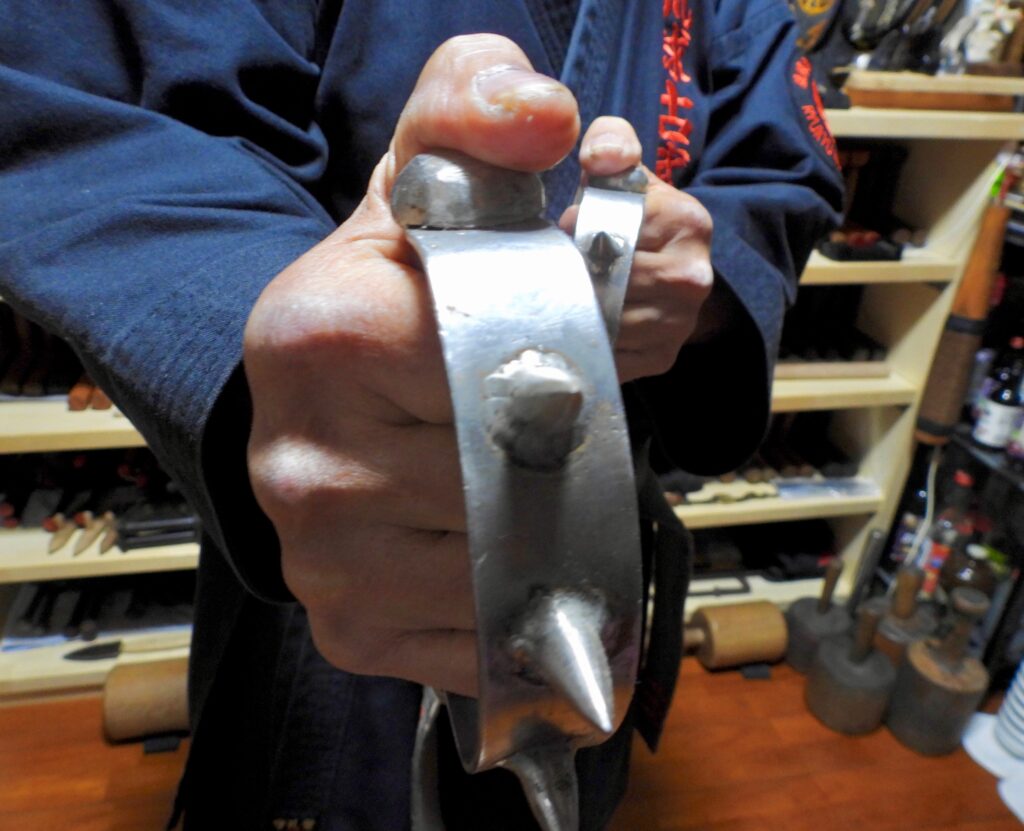
The iron 鉄甲 (Tekko) that Minowa Sensei has used a lot during hard practice, according to Master Kinjo.
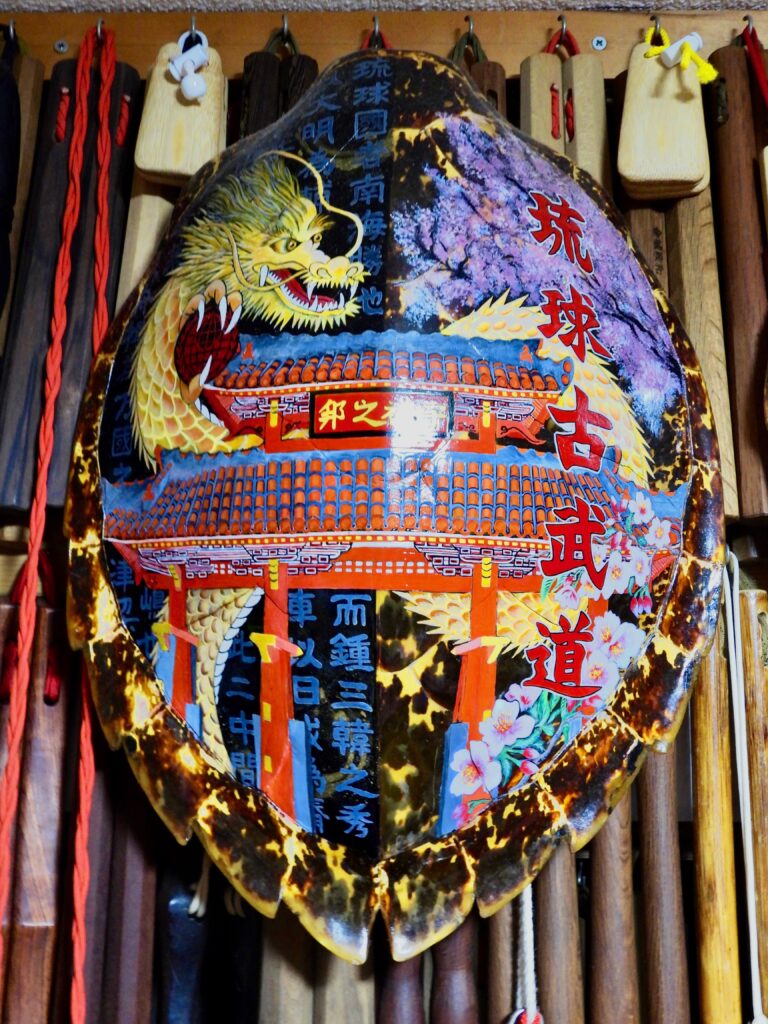
A colorful timbe (shield).
A rare Ryukyu kobudo weapon made from the shell of a sea turtle.
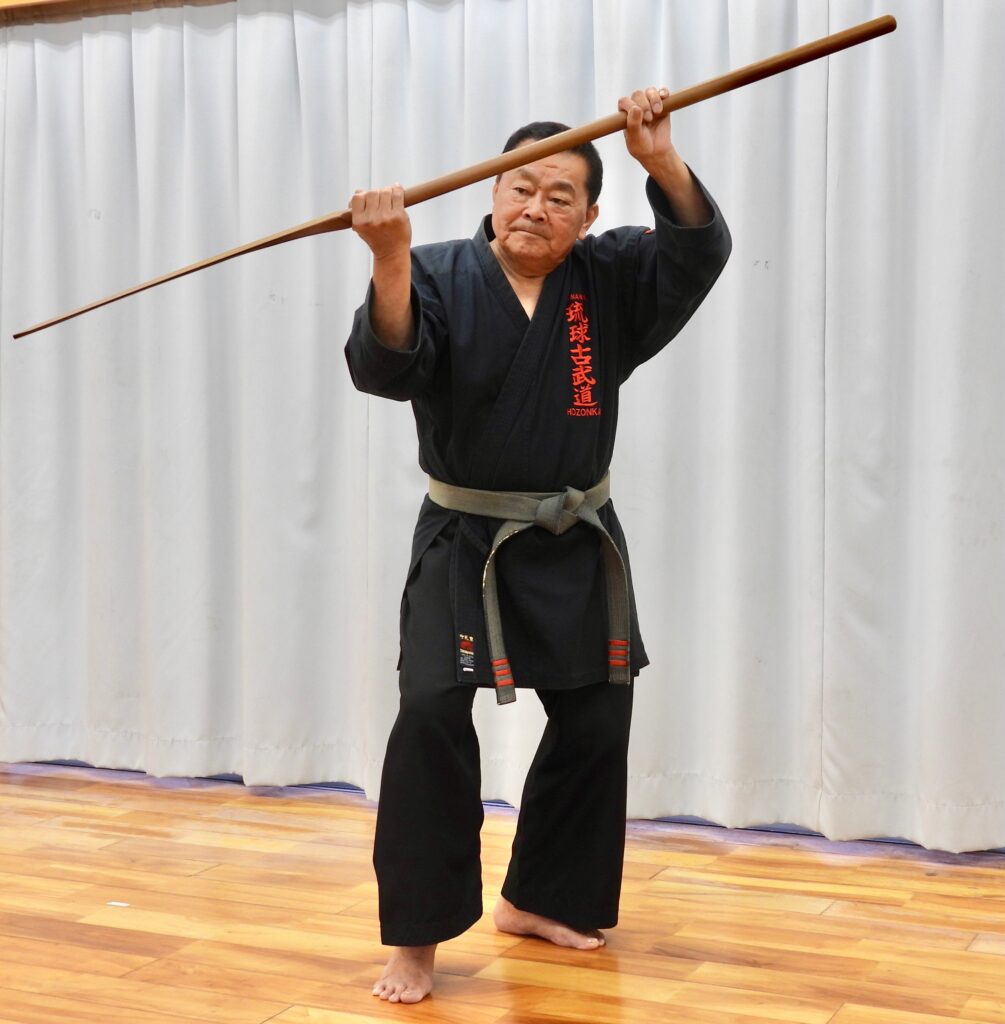
Biography of Ryukyu Kobudo Hozonkai Kinjyo Masakazu
Ryukyu Kobudo Hozonkai Headquarters Hanshi 9th Dan.
Okinawa Uechi-Ryu Hozonkai Headquarters Hanshi 9th Dan.
-1952 Born in Tsuboya-cho, Naha City, Okinawa Prefecture.
–1971 Studied under Katsuhiko Minowa at the Matsukawa Branch of the Ryukyu Kobudo Hozon Shinkōkai.
–1975 Received his first degree black belt from the Ryukyu Kobudo Hozon Shinkōkai.
–1980 Studied under Chogi Kishaba at the Yamane Chinen-ryu Bojutsu club.
-1981 Established Kubagawa Shūbukan.
-1992 Founded the Ryukyu Kobudo Hozonkai, which still exists today.
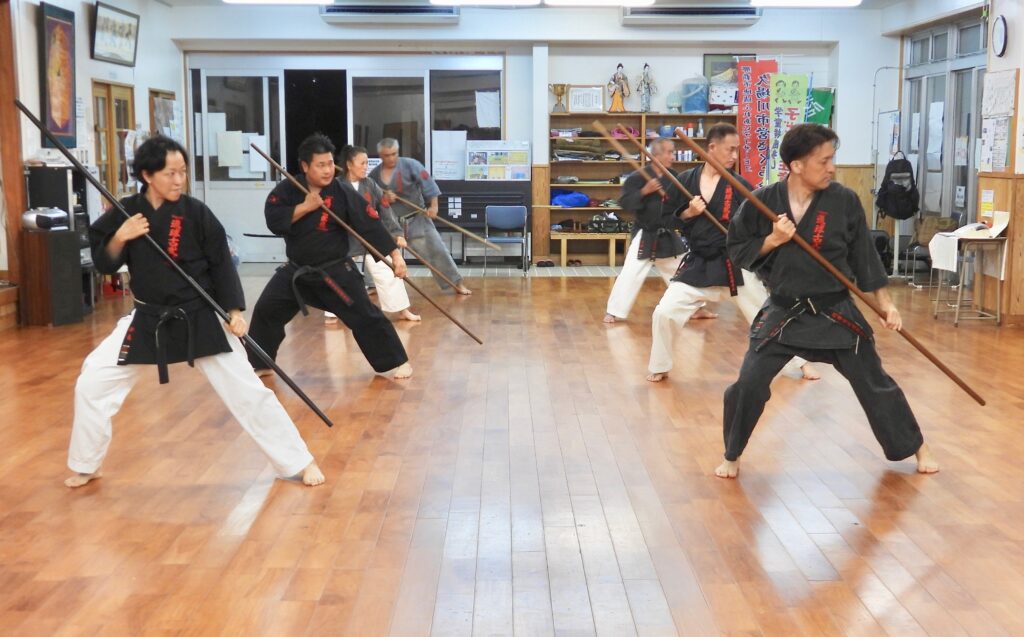
At the general headquarters of the Ryukyu Kobudo Preservation Society, students practice Ufugusuku no Kon.
(1) How did you start martial arts?
I was born in Tsuboya in Naha City, but when I was two years old, my family moved to Iriomote Island. Japan had a program to bring volunteers to help local development of the islands. Then, we moved to Ishigaki Island and that is where I really grew-up. When I was in 2nd grade elementary school, I discovered Uechi-ryu through Yabiku Masakatsu Sensei. If I say “discover”, that’s because I was peeking through the wooden fence of his Dojo. This is the time I decided that I wanted to learn Karate, but he only taught it to adults. We finally moved back to the main island of Okinawa. Japan was proposing an employment program for teenagers in which I enrolled and I was sent to Wakayama. Luck must have brought me there, because Wakayama was the base of Uechi-Ryu. Its founder, Uechi Kanbun (1877-1948), had established there with the help of his coworker (also Okinawan from Motobu) Tomoyose Ryuyu (1898-1971). I learned with “Magodeshi” (3rd generation disciple) Tomoyose Ryukichi. I was 17.
About 18 months later, I returned to Okinawa and looked for a Uechi-Ryu Dojo. This is it! I thought. It was a small Dojo in Matsukawa, Naha City.
Minowa Katsuhiko Sensei (1929-2003) was a disciple of the great Master Taira Shinken (1897-1970) and he had learned Karate with Uechi Kanei (1911-1991), the second generation of Uechi-Ryu.
I was told to first do Karate for 1 year and then I would start kobudo. Karate and kobudo are like a car, the front wheels are Karate and the rear wheels represent Kobudo. You cannot move forward without front and back wheels.
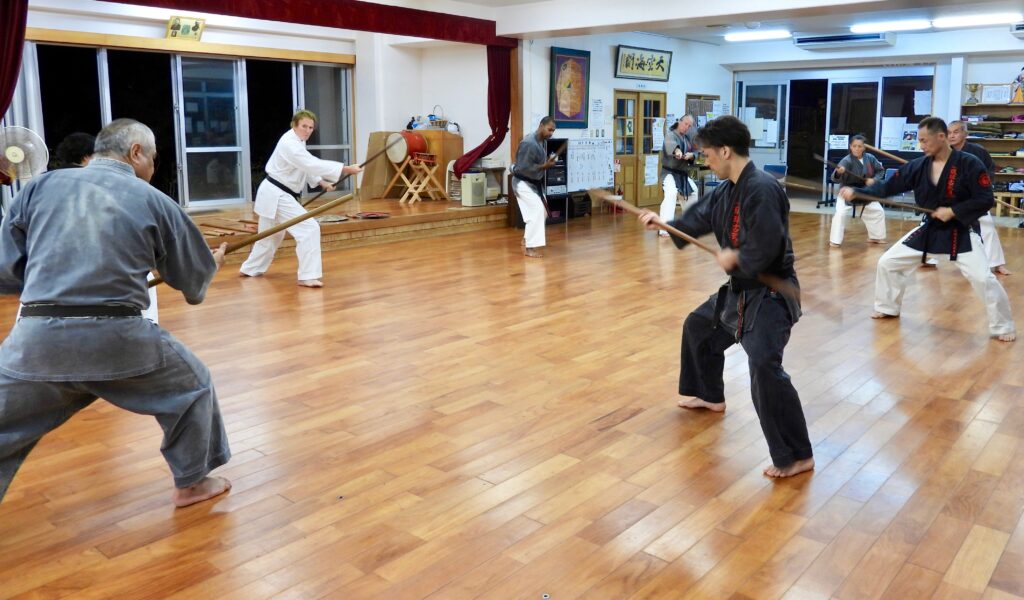
My first class ever with a Bo. It does help to already know Karate.
(2) What are the characteristics of your school (dojo)?
The Ryukyu Kobudo that was taught to me by Minowa Katsuhiko Sensei is a very orthodox style that inherits the precepts of Taira Shinken Sensei. There are many different weapons that are not found in other schools.
It takes at least 3 years to learn how to use the stick. I have been collecting weapons one by one since I was 17 years old. Some I made and remodeled myself, some I asked a blacksmith to make, and some I inherited from the relatives of my Masters in kobudo.
In my collection, I have carefully preserved the Nunchaku, Sai and Tonfa that belonged to Taira Shinken and the Bo owned by Kyan Chotoku Sensei.
(3) What is your specialty?
Bojutsu is my best, but I am also good at Eku.
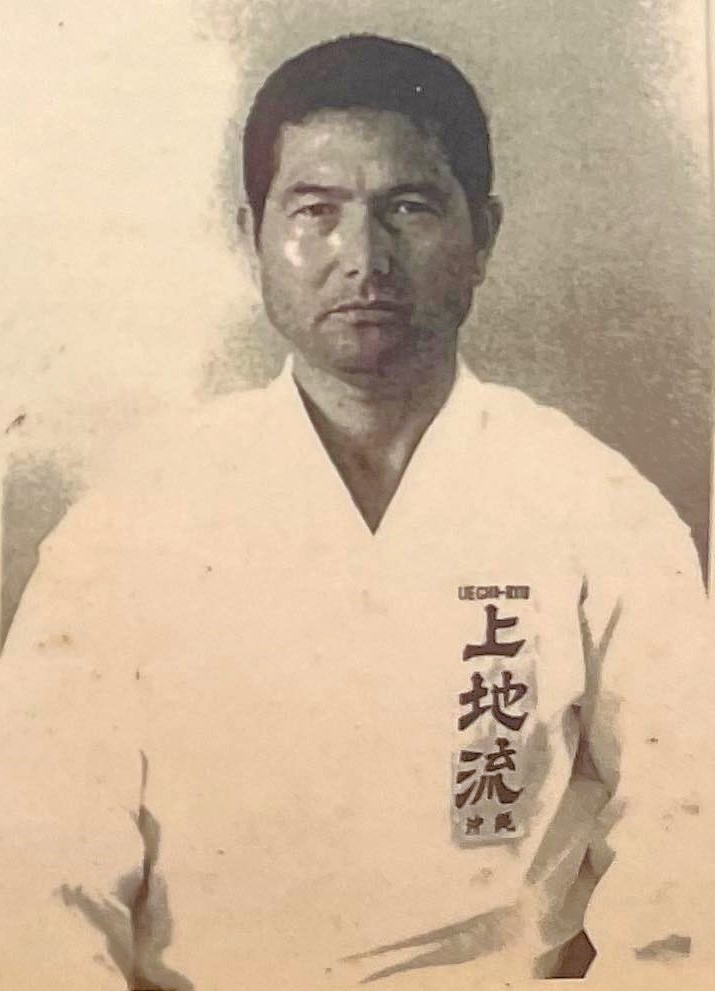
Minowa Katsuhiko Sensei, the Shisho of Kinjo Hanshi
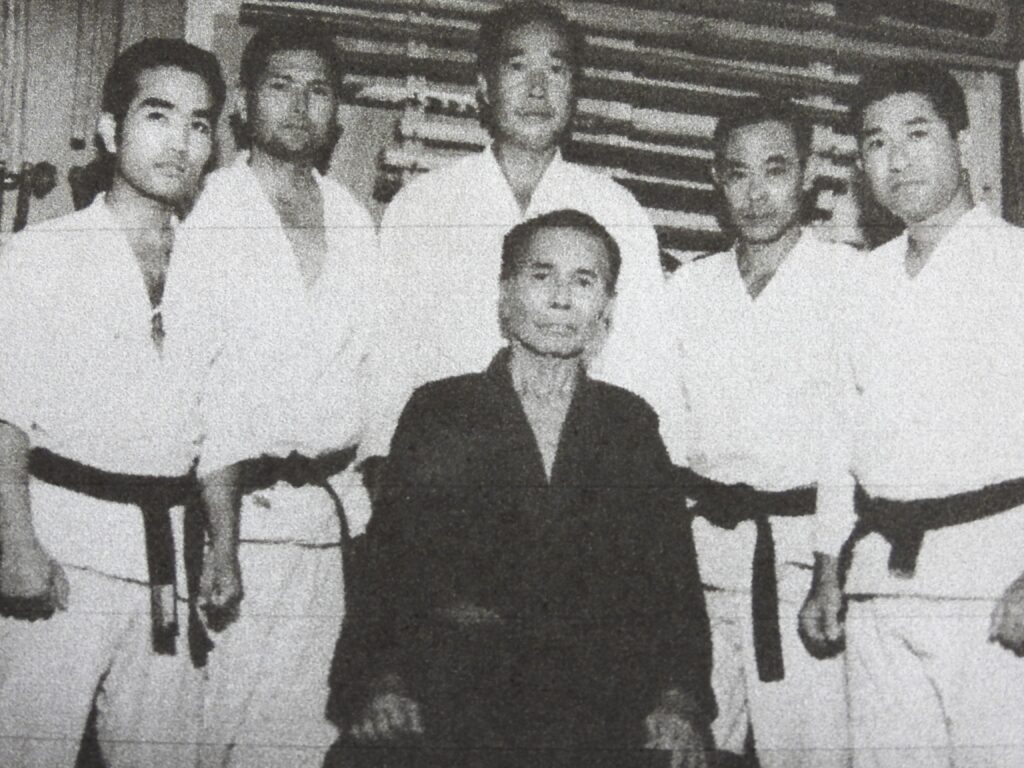
Taira Shinken (center) and his five disciples.
Minowa Katsuhiko Sensei is the 2nd from the left.
(4) Do you have any particular memories with your teacher?
For both Karate and Kobudo, my Sensei was Minowa Katsuhiko. He really cared and did a lot of things for me. When I embarrassed him by asking detailed questions, he said, “It’s too early. You should study more before asking these questions.” He was serious, straightforward, and a wonderful human being.
I learned all kinds of Kobudo, including sticks and I thought that Ryukyu Kobudo was really difficult.
Minowa Sensei used to say: “We may start with 100 students and only one or two will remain by the end”. One time I said “I give up!”, but Sensei told me; “Kinjo-kun, it is OK if you think that my teachings are deceiving you, but please don’t give up and do your best.”
Thanks to him, because he motivated me to do it again and to work hard. So, here I am among the ones still present from the 100…
Sensei was originally from Amami Oshima, and when he was about 50 years old, he returned to his hometown to take care of his parents.
We kept in touch and I always called him twice a year. I saved about 100,000 yen to pay for his trip to come see me and stay at my house.
At that time, Amami Oshima island had rising prices and the cost of rice was very high. I went with about 20 of my students to Amami Oshima. I had given each one of them 5 kilograms of rice and a can of Okinawa pork to carry; which represented about 1 year’s supply. The wife was so happy at the entrance of the house and that made all of us very happy too. I still remember how the Sensei was very happy and him saying “Thank you.”
I wish I had done even more…
At the Amami Dojo, Sensei taught with great enthusiasm to those who were becoming his “magodeshi”. I can really say that Minowa Sensei is my true Master and Shisho (師匠).
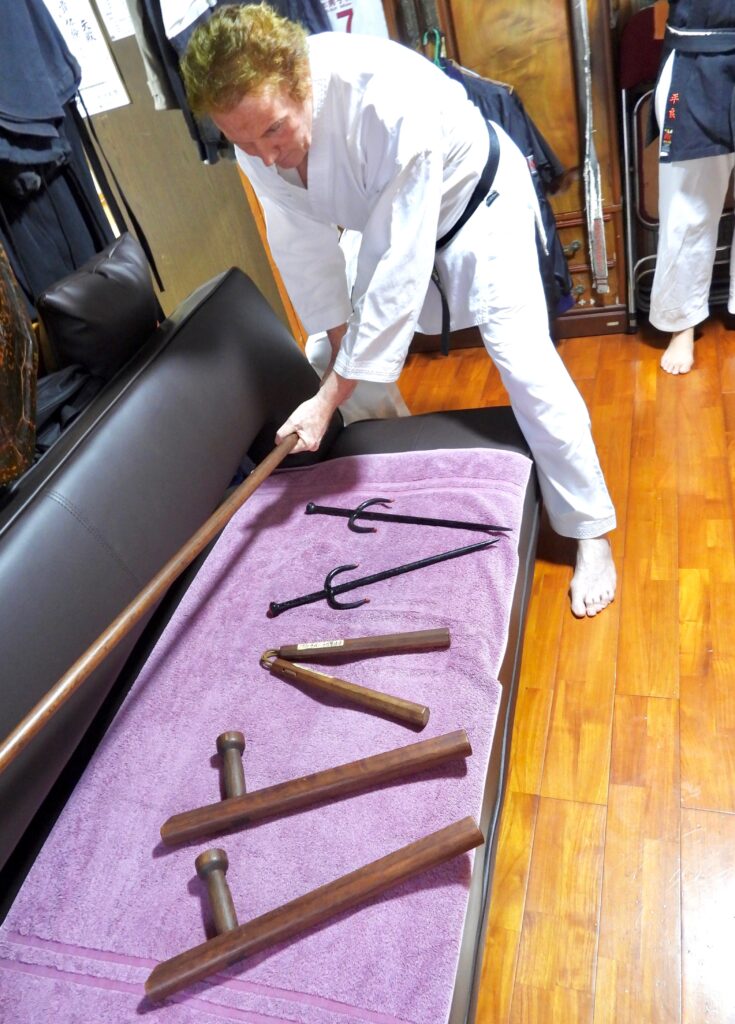
“What a treat! I am actually holding Kyan Chotoku’s Bo among Taira Sensei’s Tonfa, Nunchaku and Sai”.
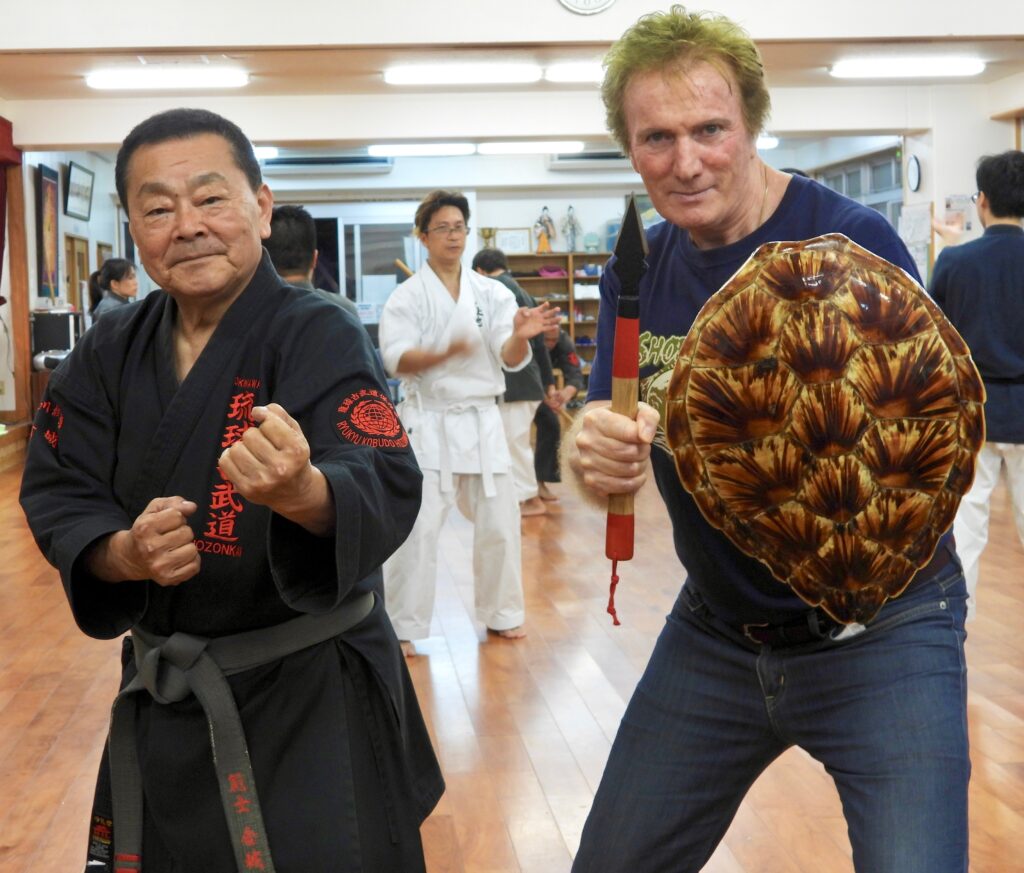
“I feel like an Island warrior with that Timbe (turtle shield)!”
(5) What is the difference between Okinawan and Mainland kobudo?
The origin of Okinawan Kobudo is the Ryukyu. Mainland Kobudo originated from the Mainland. The weapons used are also different. In Okinawa, we feel that the spirit and energy of our predecessors (who mastered the “2 wheels” of Ryukyu Kobudo and Karate), still exist today. I am sure that Mainland Kobudo probably has the same feeling about its art.
(6) Do you often teach to foreigners?
Yes, mainly from Canada, Toronto, Vancouver, Edmonton. Foreigners are coming every month this year.
I am invited to conduct seminars in Australia, America, Hong Kong, France, Germany, etc. In Canada, there are about seven dojos in the Kobudo lineage that I taught.
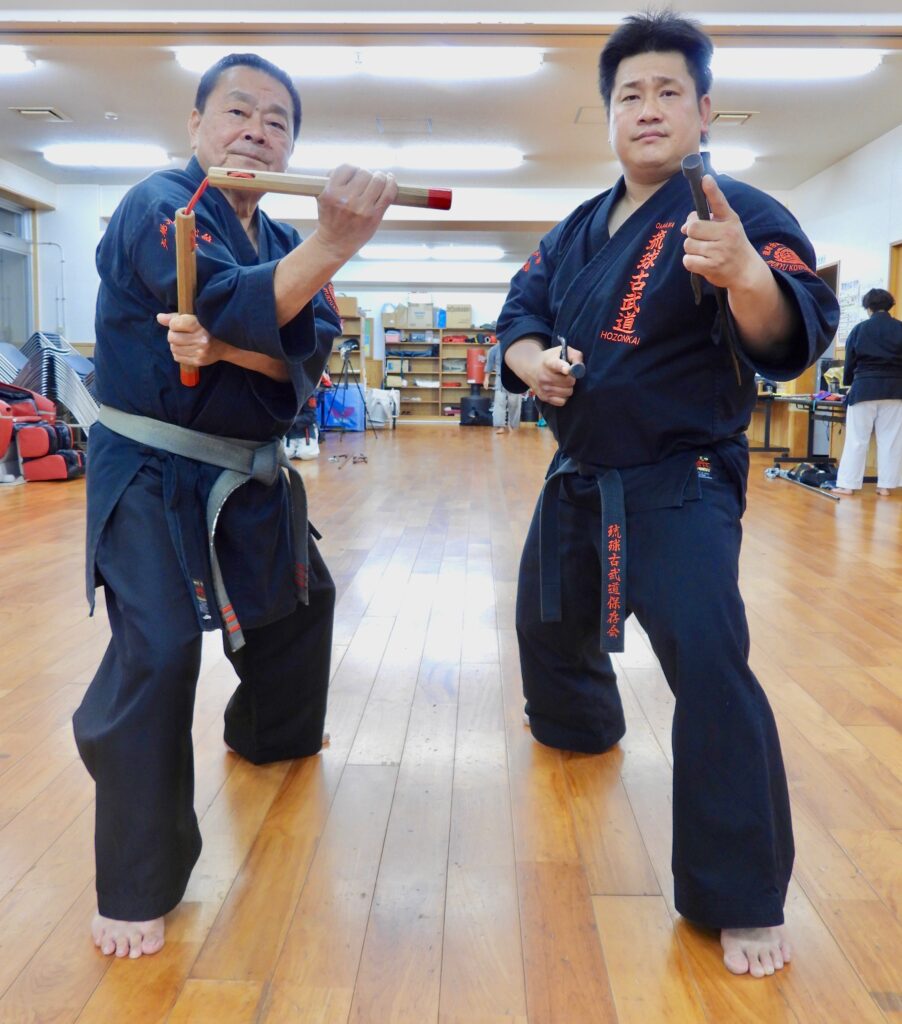
Kinjo Sensei and his second son, Kenta Shihan, holding Nunchaku and Sai.
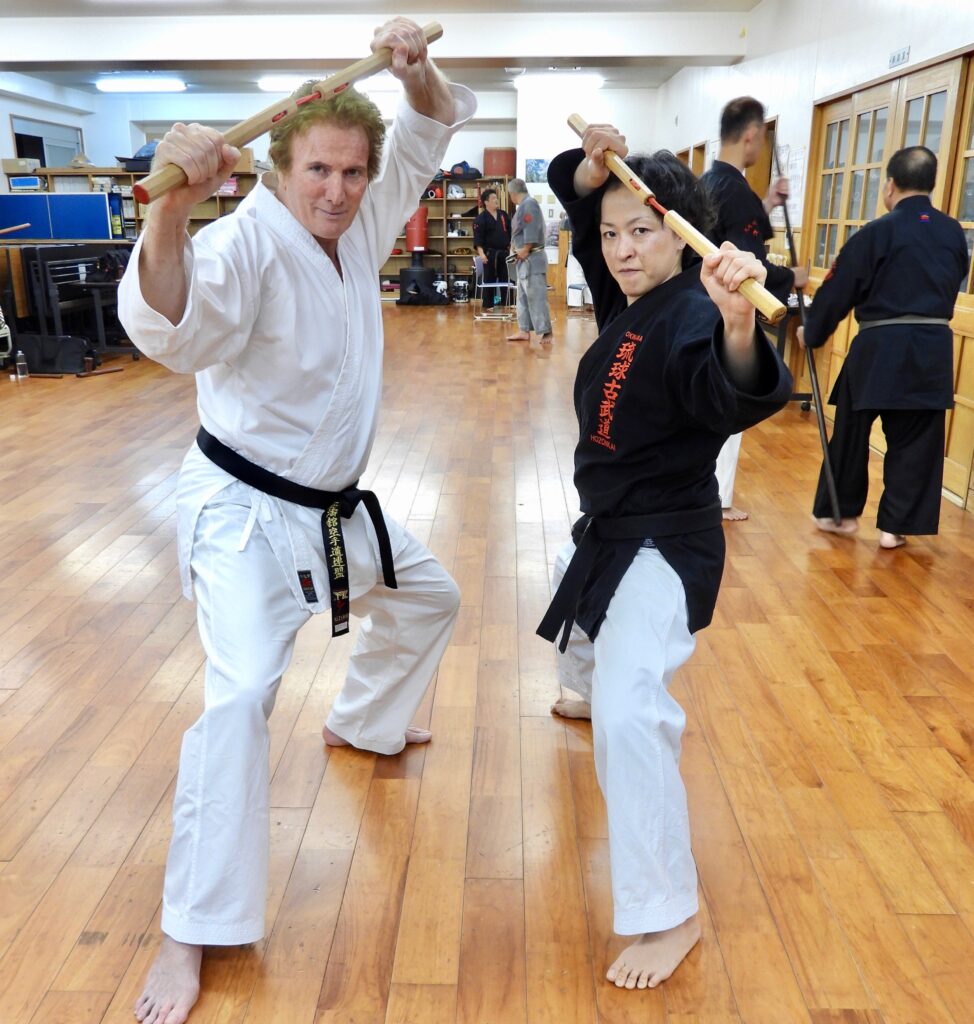
Daniel Sensei with Taira Minako Renshi 6th Dan; Tokyo branch manager and World champion of Women’s Bojutsu (Kubagawa Shubukan).
(7) What do you think about the worldwide popularity of Kobudo today?
There are too many different variations and types for the same Kata!!! I think it would be better to unify them. For example, 3 Kata; ”Chatanyara no sai”, “Hamahiga no sai”, and “Chikinshitahaku no sai” are completely mixed-up! Their order and pattern have been changed. In my Dojo, especially for those who come from overseas, I always tell them to take a video and to study after returning home.
(8) What do you think about Karate becoming a competitive sport, including the Olympics?
First of all, traditional Budo-Karate and competition Karate are different in their form. Budo-Karate follows the teachings of its Masters, and competition Karate has changed due to changes in speed, but I’m not saying this is bad. I can do both, as well as my sons and my students. Competition Karate is taught in schools, but I feel that traditional martial Karate should also be taught in schools. This is an issue for the future.
(9) What is the significance of engaging in kobudo nowadays?
I would like to pass on to future generations the splendid Kobudo we have inherited. It is a cultural asset filled with the wisdom and the techniques of our predecessors. Even in 100 years, the spirit and the techniques of Kobudo will be shared.
I am often asked which lineage is better; the Ryukyu Kobudo or the Matayoshi Kobudo? Many people don’t know that there are also other Kobudo groups… Since each style is very protective and secret, it is difficult to say which one is the best.
I keep telling the people involved in Kobudo; “Let’s practice together and bring out the best from each! Let’s make a study group together, we will be all friends”.
Budo and Karate should practice the concept of traditional Shu-Ha-Ri. [Note: Unfortunately, this word has become trendy, overused and often misunderstood nowadays].
In the “Shu-phase” we must follow loyally and study what the Sensei is teaching. It should take enough time (several years usually) to get impregnated physically and mentally. Then, the “Ha-phase” allows it to look wider, a detachment is possible, especially when the teacher dies. This breach is not negative and corresponds to the “chick coming out of the egg”. At that time we can adapt the art to our personality, while keeping the techniques and Kata in accordance with the teachings.
The “Ri-phase” is not accessible to all because it is about separation and possibly creating a new group. It requires certain skills to be on your own. You must display talent, perfect mastery, honesty and control of your ego. The ultimate aim is to spread and pass on the core of the art intact. This can be done even if the outer is slightly changed and had required a split with the old method. I just tell my students; “It doesn’t matter if the application is different from what I taught as long as it works. But if you make something that doesn’t work, you will be laughed at. You guys should do what I left undone.”
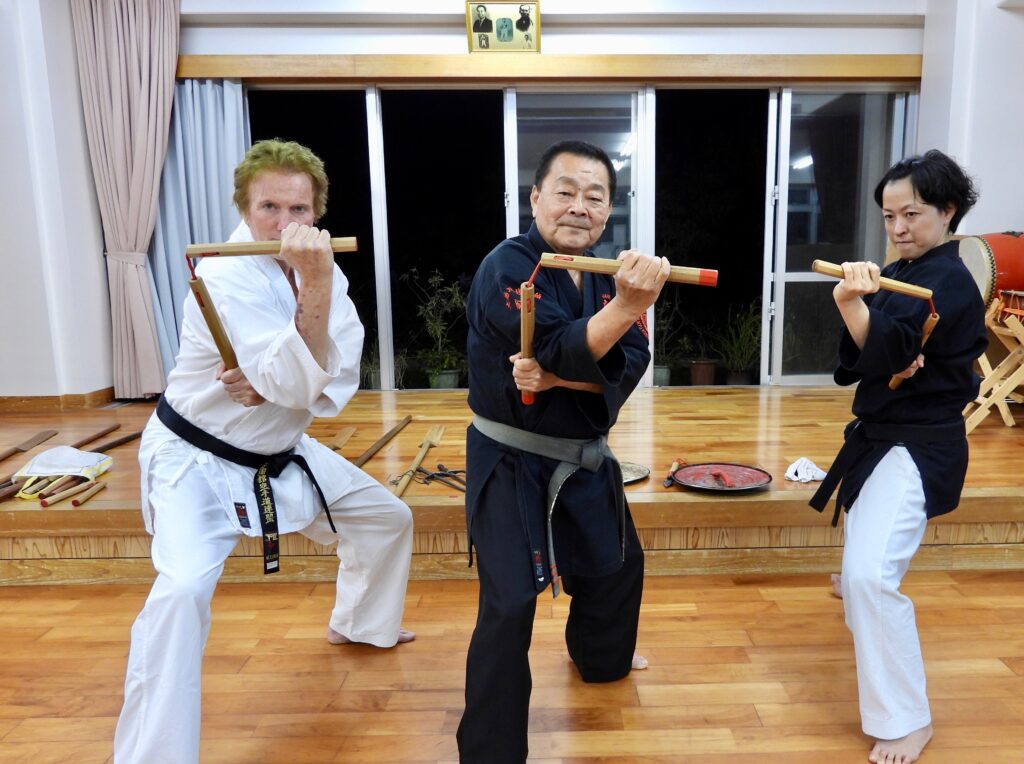
Nunchaku lesson with Kinjo Hanshi and Taira Renshi.
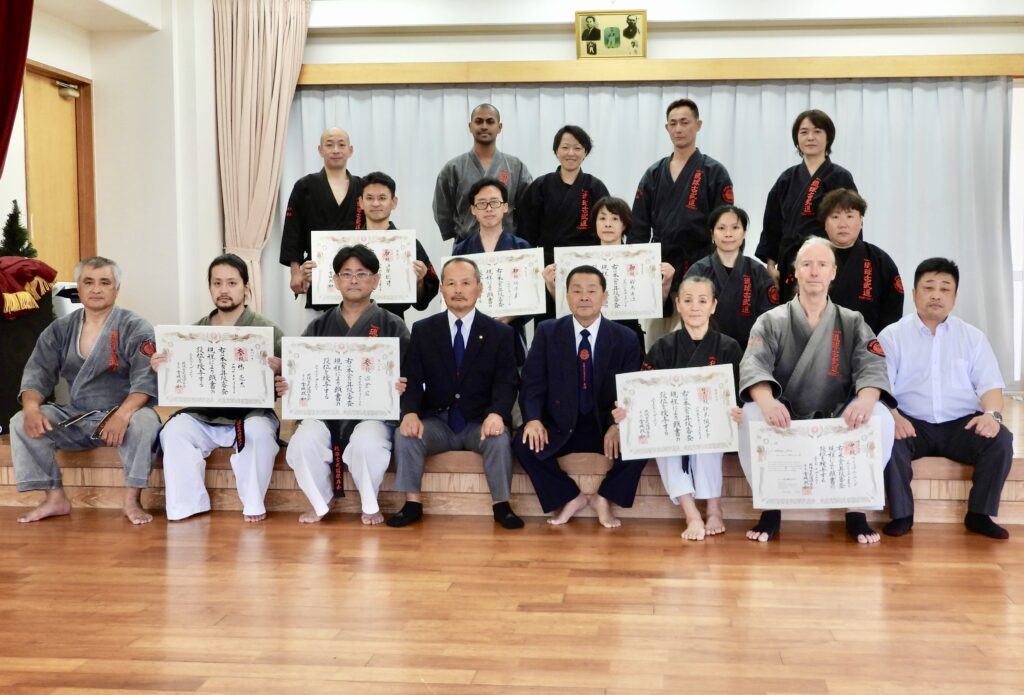
Members of the Ryukyu Kobudo Preservation Society along with some participants from the U.S. and Hong Kong, who were promoted after a successful test. Satoshi Shihan (on the right), is the eldest son of Kinjo Sensei.
(10) How do you envision the future of karate?
Karate has now become “World’s Karate”. I don’t think there is any other traditional Japanese martial arts that has spread and developed from such a small island like Okinawa to the world. So, I can only wish it will continue and head in a good direction.
(11) Do you have any message for the world?
As a Kobudo teacher, I believe that it is our duty to spread the traditional culture of Okinawa to the world through the philosophy of Kobudo.
I hope that Kobudo enthusiasts from all over will visit Okinawa to see the authentic Kobudo, even if it’s just for tourism or studying the history of Okinawa.
(12) What is “Kobudo” to you?
Kobudo is part of me. You can’t cut it, you can’t remove it. I think I am where I am today because of Kobudo. Kobudo allowed me to grow as a person and to give back to my parents.
Now that the younger generation has grown up, I am happy to have great students. Even if my own speed and endurance are declining with age, there are many things I can still teach them. It’s not just about technique, it’s about how to live as a person. I would like my students to pass on the baton.
――Daniel Sensei’s final word:
I am moved to see that the boy who was watching through the fence has evolved into a legend of Karate-Kobudo… Domo arigato gozaimashita Sensei! I am sure your messages and wisdom will reach the Budoka of the world.
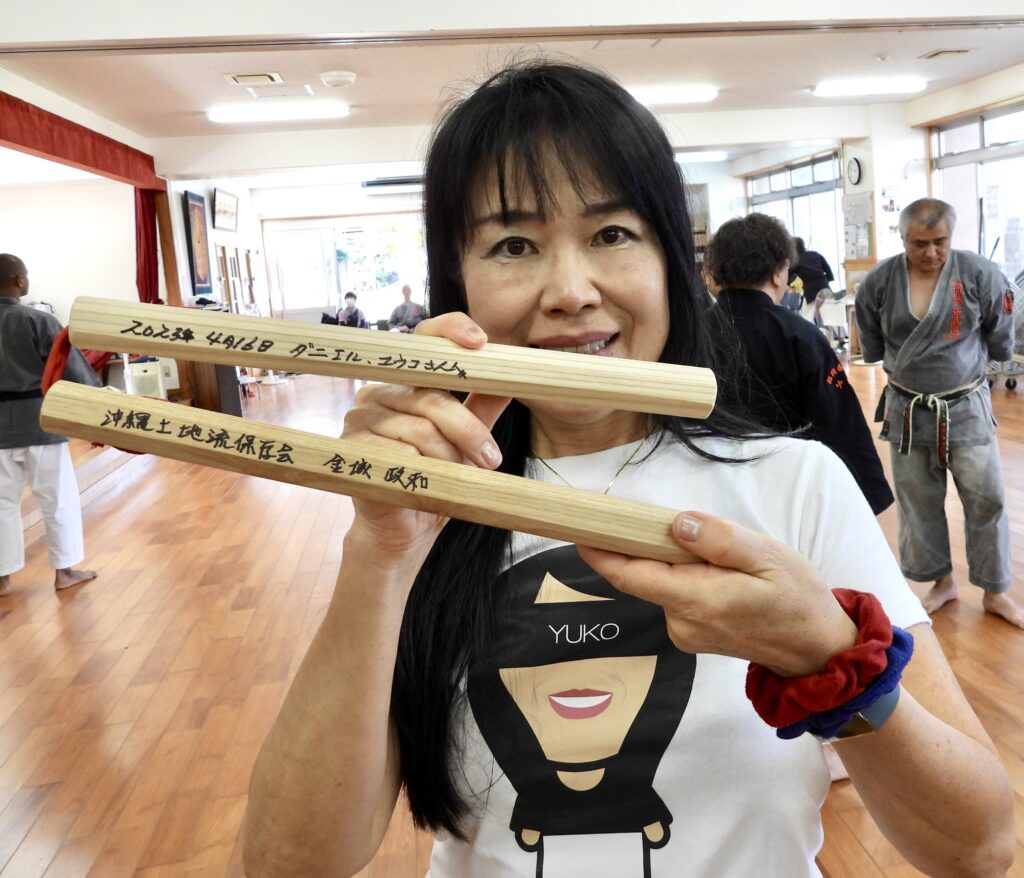
At the end of this interview, Kinjo Sensei offered a handmade Nunchaku to Daniel and Yuko Sensei. The personal dedication from the author makes it a very valuable item that will be cherished forever.

A Kanzashi (hairpin) for self-defense, called a “jiefah” in Okinawan. This piece has been hand-made by Kinjo Sensei from Kuruchi, a rare tree from Ishigaki. It has an incredibly sharp tip. Upper left is the member badge of the Ryukyu Kobudo Preservation Society.
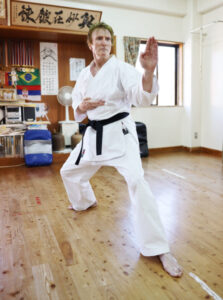
Daniel Mardon; the Karateka-Therapist
Creator of Aromapressure® method and physiotherapist with a valid US license, Daniel Mardon was born in Paris. One of his specialties is to teach and to perform lymphedema and subcutaneous tissue-damage care, after radiotherapy for cancer patients at medical institutions and subcutaneous tissue-circulation stimulation before and after surgery.
He was also a therapist for two famous soccer teams in Paris. Since 2005, he has focused on producing top-class hotel spas in Japan, as well as physiotherapy education and awareness-raising activities for health care professionals. Author of several books, among his major publications includes “The Physiology and Bodywork of Physical Therapy ” (Published by BAB Japan) and DVD “Daniel Mardon Aromapressure® Method ” (Pony Canyon). He regularly appears on television and radio shows, and has featured in numerous media publications.

